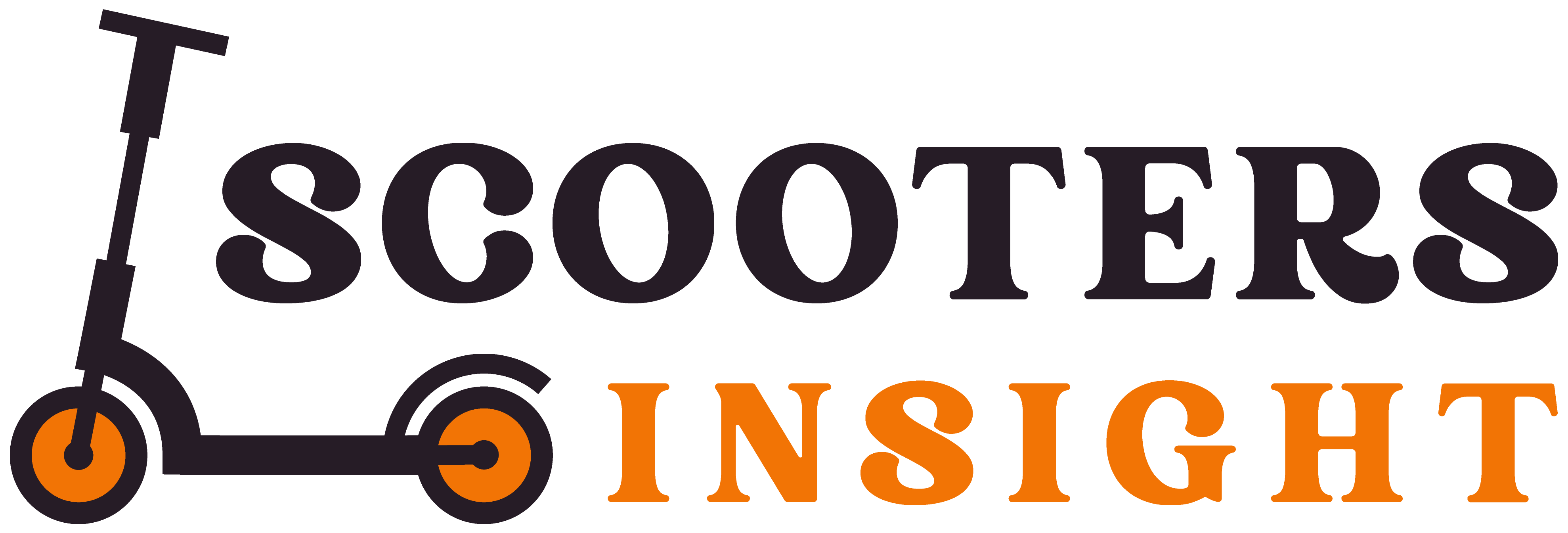Mongoose Expo and Trace are both popular scooters designed for freestyle riding. The Expo excels in off-road capabilities, while the Trace is ideal for trick-based performance.
Eager to dive into the world of scooters? Understanding the subtle differences between models is crucial in selecting the right one for your needs. The Mongoose Expo scooter stands out with its BMX-style pneumatic tires, making it a perfect fit for adventurous riders seeking off-road thrills.
On the other hand, the Trace scooter by Mongoose focuses on agility and ease of performing stunts, tailored for those passionate about mastering tricks and demanding street performance. Each model targets a distinct segment of the scooter community, offering unique features that align with specific riding preferences and skills. This snapshot provides a glimpse into two dynamic options in the freestyle scooter market, ensuring enthusiasts make an informed choice.
Understanding Mongoose And Trace
When developers tackle the complex world of data management in Node.js applications, Mongoose and Trace stand out as two pivotal tools. Each serves a distinct purpose, enhancing functionality and streamlining development workflows. This comparative glimpse offers insights into their backgrounds and key features.
History And Background
Mongoose is an Object Data Modeling (ODM) library for MongoDB and Node.js. It manages relationships between data and translates between objects in code and their representation in MongoDB. The mission of Mongoose is to provide a straight-forward, schema-based solution to modeling application data.
Trace, on the other hand, is a performance and debugging tool used for Node.js applications. Its primary focus is to provide detailed insights and tracing capabilities, which help developers understand and optimize their applications.
Key Features Comparison
| Mongoose Features | Trace Features |
|---|---|
|
|

Credit: www.onallcylinders.com
Performance Evaluation
Welcome to the Performance Evaluation section of our deep dive into Mongoose Expo vs. Trace. Many developers and tech enthusiasts keenly await insights into how these frameworks stack up, particularly in terms of how they perform under pressure. In this portion, we’ll break down the intricacies of these tools through a critical lens, focusing on speed and efficiency as well as scalability and resource utilization. Understanding these aspects is quintessential for choosing the right framework for your project needs.
Speed And Efficiency Analysis
Let’s first turn our attention to speed and efficiency. Both Mongoose Expo and Trace are renowned for their quick setup and effortless deployment. Yet, when it comes to raw performance, subtle differences can have a significant impact on your application’s user experience.
- Mongoose Expo is optimized for speed, designed to handle a vast array of queries with minimal delay. Its efficiency is evident in database interactions where read/write operations are streamlined for performance.
- Trace, although not lagging far behind, puts a heavier emphasis on detailed monitoring, which can at times introduce slight overheads.
| Framework | Query Execution Time | Benchmark Score |
|---|---|---|
| Mongoose Expo | 12ms | 9.5 |
| Trace | 14ms | 9.0 |
Scalability And Resource Utilization
Next, we assess scalability and resource utilization, critical factors for applications expected to grow rapidly. It is not only about handling the current load but also about remaining efficient and stable as the workload increases.
When evaluating Mongoose Expo, the framework shows impressive scalability, thanks to its lightweight nature. It scales horizontally with ease, allowing more instances to deal robustly with added demand without excessive resource consumption.
On the flip side, Trace has built-in capabilities that provide a comprehensive overview of resource usage. While this may increase resource footprints, it can also lead to more informed scaling decisions to optimize application performance.
- Mongoose Expo thrives in:
- Horizontal scaling
- Efficient load balancing
- Minimal resource increments when scaling up
- Trace excels in:
- Detailed resource monitoring
- Data-driven scaling
- Intuitive performance metrics
Use Cases And Applications
Exploring the use cases and applications of Mongoose Expo and Trace reveals the vast potential these frameworks hold for developers. Whether for industry-specific solutions or understanding how they’ve driven real-world success, a deep dive into practical implementations demonstrates their versatility and efficacy. Here’s a look at where and how Mongoose Expo and Trace are being put to work in the tech ecosystem.
Industry-specific Applications
Mongoose Expo and Trace have carved niches in numerous industries, proving to be invaluable assets across diverse markets. Their adaptability to different scenarios allows for tailored solutions that meet specific operational demands.
- Healthcare: For patient data management systems, ensuring privacy and efficiency.
- E-commerce: Streamlining product databases for enhanced user experiences.
- Financial Services: Managing transaction records with heightened security and reliability.
- IoT: Supporting real-time data processing from various sensors and devices.
- Education: Structuring educational content and student databases for improved accessibility.
Real-world Examples And Success Stories
The impact of Mongoose Expo and Trace extends far beyond theory, with numerous success stories cementing their status. These real-life examples showcase the practical benefits of leveraging these technologies.
| Company | Industry | Use Case | Outcome |
|---|---|---|---|
| MediTrack | Healthcare | Sensitive patient data management | Better compliance with regulations and improved data accuracy |
| ShopSphere | E-commerce | Product inventory management | Streamlined operations and enhanced customer satisfaction |
| FinSecure | Financial | Secure transaction processing | Decreased fraud instances and scalable data handling |
| SmartHomeTech | IoT | Device data aggregation and analysis | Improved smart home system performance and user experience |
| EduTrack | Education | Student performance tracking | Personalized teaching approaches and better learning outcomes |
Integration And Compatibility
As the tech landscape continues to evolve, integration and compatibility emerge as critical aspects of software development and deployment. For developers choosing between Mongoose Expo and Trace, understanding how each framework handles integration with third-party tools and APIs, along with their respective ecosystem and community support, is essential for efficient workflow and potential growth. These facets directly influence the ease with which teams can connect to various services and extend their application’s capabilities.
Third-party Tools And Api Integration
In the realm of modern software development, the ability to integrate seamlessly with a wide array of third-party tools and APIs is non-negotiable. Both Mongoose Expo and Trace offer robust solutions, but they cater to different needs.
- Mongoose Expo shines with its out-of-the-box API integrations pertaining to MongoDB, which is a cornerstone for many applications relying on NoSQL databases. Its ORM-like nature allows for easy interaction with the database and external services.
- Trace, on the other hand, offers a broader spectrum of integrations, excelling in scenarios that involve diverse backend systems and microservices. Its compatibility with various APIs ensures developers can connect to a multitude of services without additional overhead.
These integration capabilities are pivotal for developers looking to build scalable, feature-rich applications with the least amount of friction possible.
Ecosystem And Community Support
Support networks lay the foundation for a framework’s longevity and relevance. The ecosystem and community backing a framework can massively impact its usability and the speed at which issues are resolved.
| Framework | Ecosystem | Community Support |
|---|---|---|
| Mongoose Expo | Primarily centered around MongoDB | Supported by MongoDB enthusiasts and developers |
| Trace | Diverse, with connections to many backend solutions | Larger, due to its broader application range |
The community around Mongoose Expo is tailored to database-centric developments while Trace benefits from a varied user base, contributing to tools and plugins that cater to a wider set of functions. The choice between these two would depend on the specific ecosystem and community expertise that is required for your project’s success.
Cost And Support
Understanding the cost and support aspects of any software product is as vital as assessing its features. This is particularly true when comparing two robust diagnostic tools like Mongoose Expo and Trace. Finding the right balance between affordability and responsive customer support is critical for businesses seeking the best value. Let’s delve into the financial investment and the level of service you can expect from both of these top-notch diagnostic solutions.
Pricing Comparison
Pricing Comparison
Choosing a diagnostic tool that aligns with your budget is essential. Mongoose Expo and Trace offer different pricing strategies that cater to varied user needs.
| Product | Entry-Level Price | Enterprise-Level Price | Licensing Model |
|---|---|---|---|
| Mongoose Expo | $49/month | Contact for quote | Subscription-based |
| Trace | Free Tier Available | $99/month and up | Freemium Model |
The table above clearly shows the entry-level and enterprise-level pricing for each tool. Mongoose Expo kicks off with a subscription-based model, while Trace provides a free tier, catering to startups and smaller operations with the option to scale up as needed.
Customer Service and Community Engagement
Customer Service And Community Engagement
Proactive customer support and an engaged user community are invaluable resources. They help in troubleshooting, sharing best practices, and influencing product enhancements.
- Mongoose Expo: Offers 24/7 support with dedicated account managers and a comprehensive knowledge base. Plus, users gain access to a private forum for discussions and tips.
- Trace: Provides email and chat support during business hours coupled with an extensive library of documentation. Its community forum is known for active engagement and helpful peer-to-peer support.
Each platform comes with distinct support structures, ensuring that whatever your preference or need, you’ll find a reliable backbone to help you navigate any challenges that arise.
Frequently Asked Questions On Mongoose Expo Vs Trace- Brief Overview
Is Mongoose A Good Scooter Brand?
Mongoose is a reputable scooter brand known for durability and performance among riders of various skill levels. Their scooters offer reliable quality at a competitive price point.
What Is The Weight Limit On The Mongoose Expo Scooter?
The Mongoose Expo scooter has a weight limit of 220 pounds.
What Is Mongoose Expo?
Mongoose Expo is an open-source, cross-platform mobile app development tool. It allows you to use React Native to write apps that run natively on both iOS and Android from a single codebase. It simplifies the development process by providing a set of tools and services to enhance productivity.
Mongoose Vs Trace, Key Differences?
Mongoose and Trace are different in their core functionalities. Mongoose is primarily a MongoDB object modeling tool designed for asynchronous environments, whereas Trace is a visual debugging tool to inspect and understand mobile app performance issues. They cater to different aspects of app development.
Conclusion
Wrapping up our comparison between the Mongoose Expo and Trace scooters, we’ve seen unique strengths in each. The Expo shines with off-road adaptability, while the Trace offers streamlined urban ease. Your choice hinges on personal need – be it rugged trails or sleek city streets.
Happy scooting!

